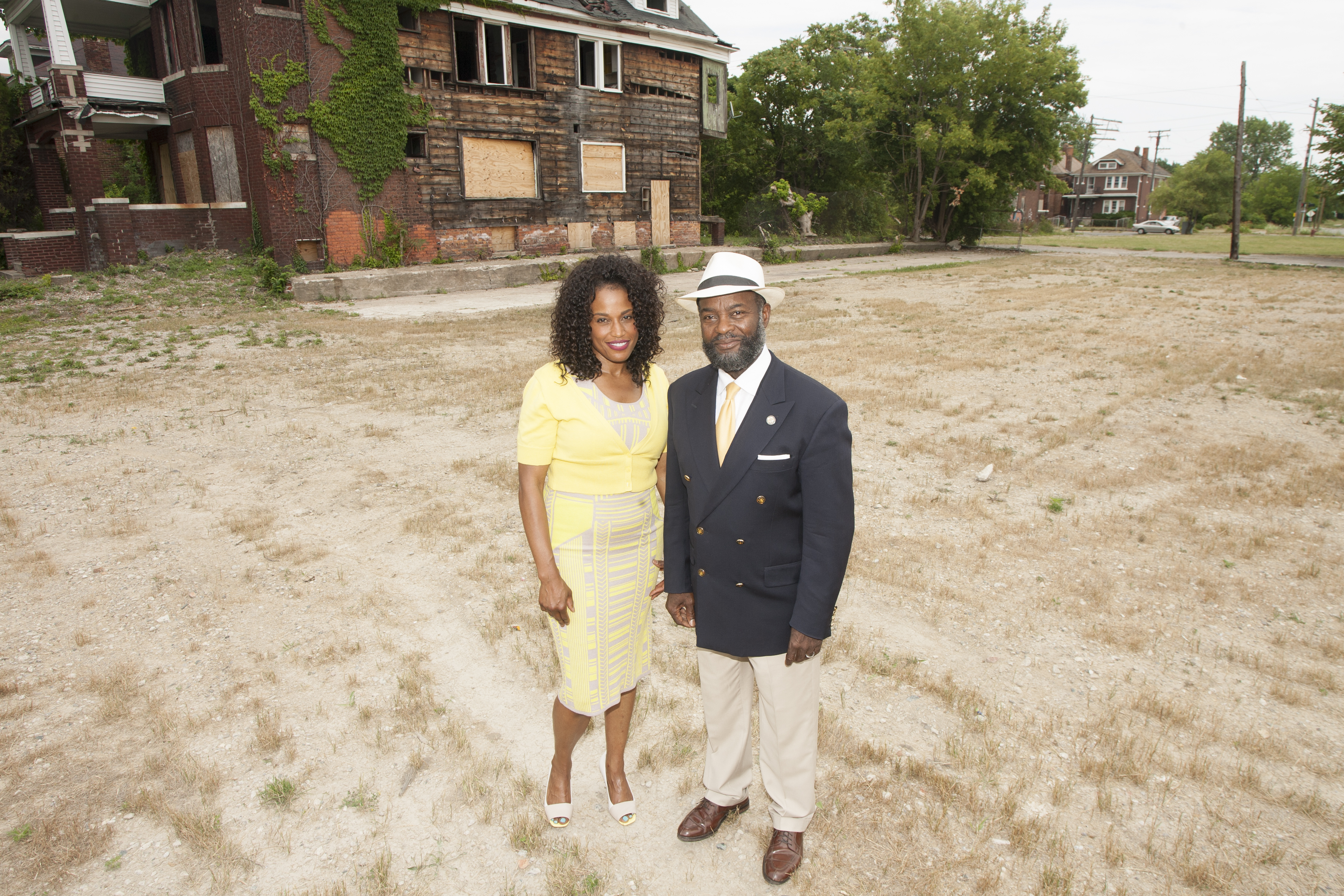
Defining the look and feel of a ‘New Detroit’ has a lot to do with who’s doing the defining.
If you talk to a Dan Gilbert or a Mike Ilitch, for example, you would likely be presented with the gleaming images of a booming downtown and Midtown, or the new Little Caesar’s Arena, which is being constructed at something approaching warp speed bordering what used to be known as the Cass Corridor.
But if you talk to a Katrina Lockhart or a Ray Johnson, the vision changes noticeably. For the two partners comprising Karasi Development Group Inc., the New Detroit is as much a function of community participation and acknowledgment/appreciation of heritage as it is replacing/upgrading dilapidated structures with shiny new facades. Their mission statement says it clearly:
“We are a local development company with strong roots in the city of Detroit. One of our missions is to restore the economic fiber of local communities. We believe in putting community at the center of what we do, not just by our words but by our actions. …The company is purposefully driven to empower communities to reach their full potential.”
The Boston Edison Business District Project, a new development soon to be underway in one of the city’s more renowned historic neighborhoods, promises to physically exhibit the philosophy preached by Lockhart and Johnson.
“I realize it’s important to have the big developers and the non-profits, and the private companies, but it’s also important for that piece of the puzzle, most importantly for the community, to be involved,” said Lockhart, who grew up in the Boston Edison area on Atkinson.
Atkinson cites her family’s deep roots in the community as the motivating force behind her desire to breathe life back into the community of her childhood. From her perspective, it takes someone who can appreciate the history and significance of the area to truly ‘bring it back’ in a way that respects the heritage and tradition, not simply as a stretch of land to be built upon to fulfill someone else’s idea of progress.
“Part of it comes from the fact that my family has been rooted in the historic district for over six decades. My father moved, as we like to say, from the red clay cottonfields of Georgia. Getting married, he was looking for a place where any young family is trying to find; beautiful homes, great education, everything you could find at your fingertips, and that’s what 12th Street offered them,” she said.
As someone who was there throughout many of the neighborhood’s ups and downs, “I believe I have an obligation as a stakeholder to restore the sustainability as well as the economic vitality of the community.”
Which is why Lockhart went to the Detroit Landbank to present her proposal to acquire the land at 12th and Atkinson – the precise spot where the Detroit 1967 riot (or rebellion) caught its spark.
“Their initial reaction was ‘Why?’ Because there’s nothing there. The building was still there, but very dilapidated.”
But after showing plans for what she wanted to do with the area, her proposal began to get some traction.
“That’s where Ray Johnson came into the picture. For me it was perfect that he become a developing partner. He can really help this vision happen.”
The project is expected to encompass two phases, the first of which will be the construction of a cultural center.
“The purpose of that building is really to tell the story of the area from its inception from the Jewish community to AA moving in. Sometimes we don’t realize this; the impact of the black community and the economic growth that they create in an area. And how that area really started to grow when the African American community moved in,” said Lockhart.
The second phase will be mixed use, which will include both commercial and residential space.
Ray Johnson has been successfully combining passion and vision for years, and the numerous awards he has received throughout his career (including Eastern Michigan’s Meritorious Civil Rights Award and the Detroit City Council’s Spirit of Detroit Award) are testament to his sincere dedication to the building of community. Johnson is recognized primarily for his founding and development of schools throughout the country, and his pioneering leadership in character education and African-Centered curriculum.
“When I talked to her, I was struck by her passion and commitment, and of course I have long roots in that area as well,” said Johnson. “My dad’s barber shop on Linwood and Burlingame, and then we have friends and family throughout that area. So it was personal for me as well because the whole notion of gentrification always bothered me. The other thing that bothered me was not so much in terms of the participation of others coming in, but the attitude that nothing was there before they showed up. It’s like I heard a guy say it was nothing but a blank page. A blank page? Like there wasn’t a Detroit before you got here? We felt that we must be stewards of this legacy. To be able to tell the narrative, and to document it. There’s power in shared history and shared memories. All anyone talks about is the riot and that folks left running but it was a vibrant community before all that.”
Johnson remembers vividly the community before the uprising, and then what came after.
“The tanks in central field were aimed at my dad’s barbershop, and I was trying to figure out why, and we realized they were also aiming at the mosque, and they were aiming at a Muslim clothing store around the corner,” he said.
But now is the time to design the future.
“I like to talk about change. Change is the greatest architect,” said Lockhart. “It gives us a direction of what we should do and where we should go. …There’s something great about coming from the ashes. Surviving and thriving. And growing, and rising even stronger.”